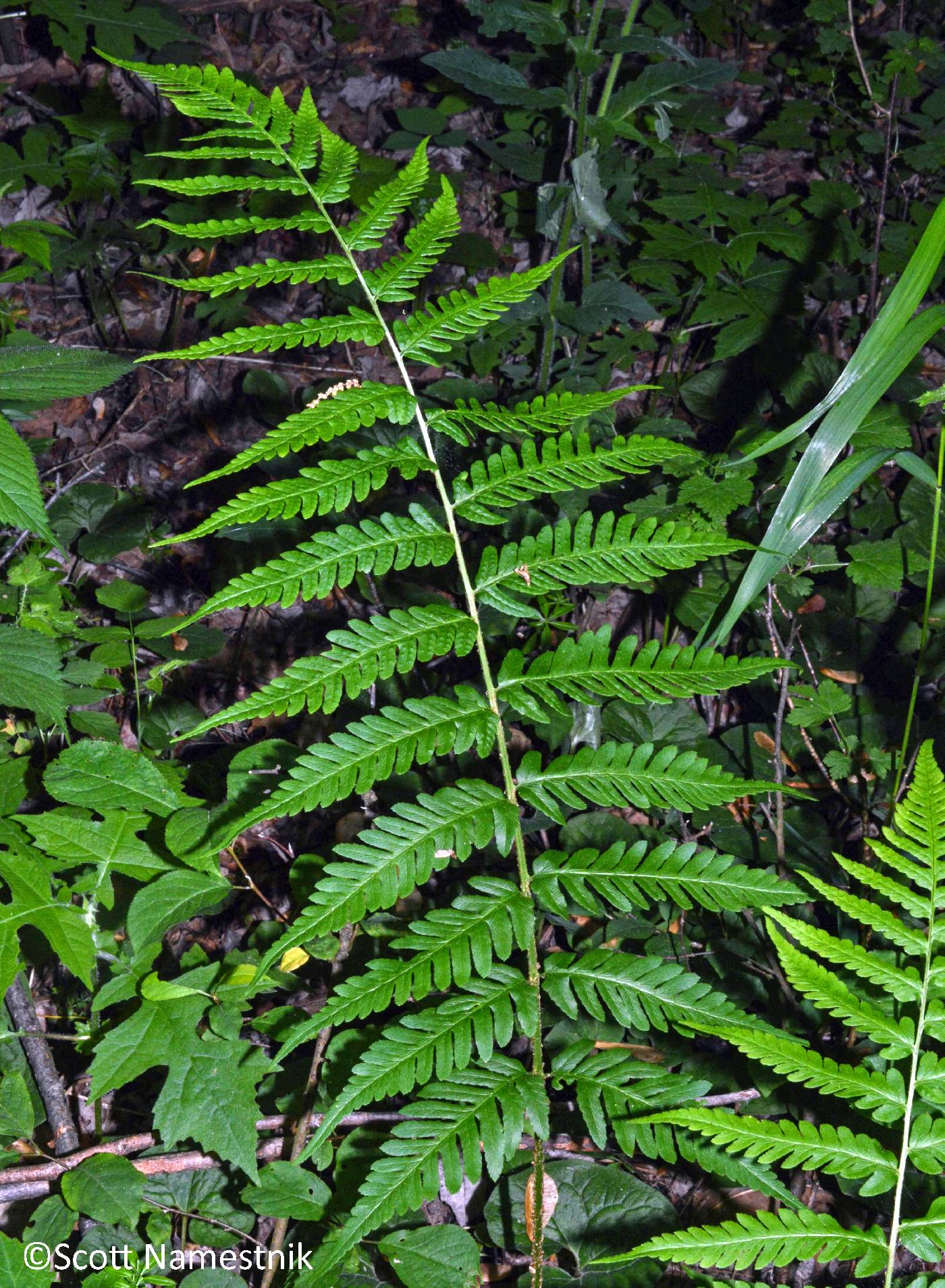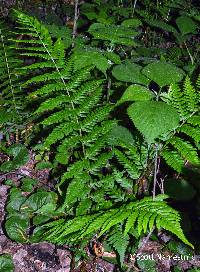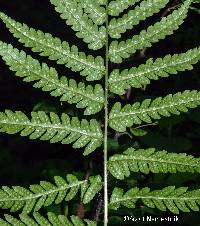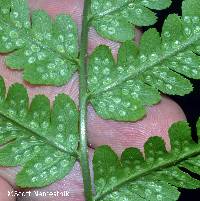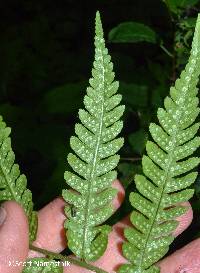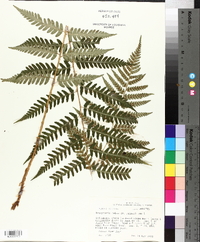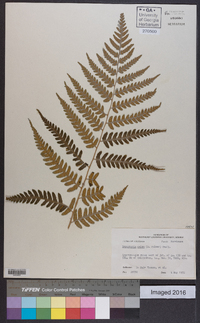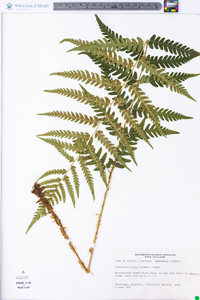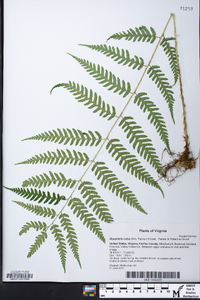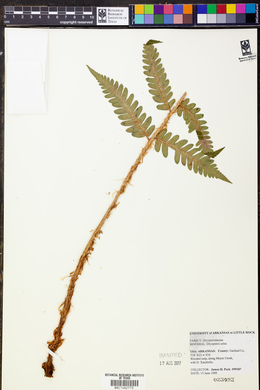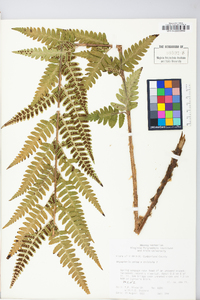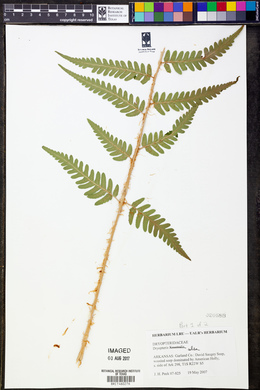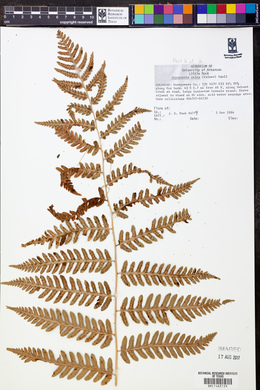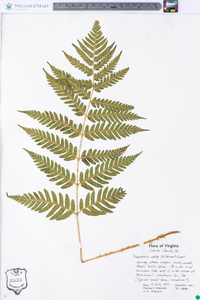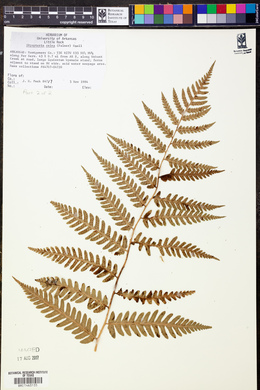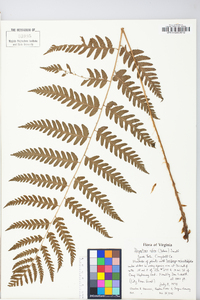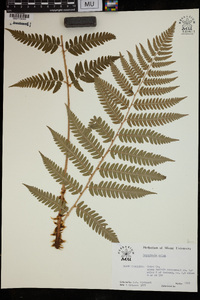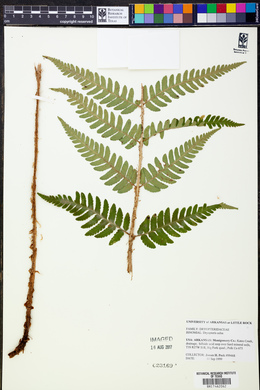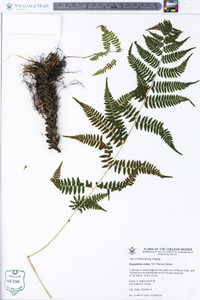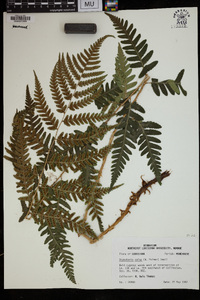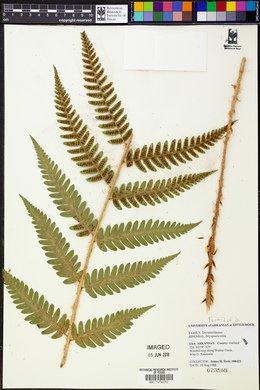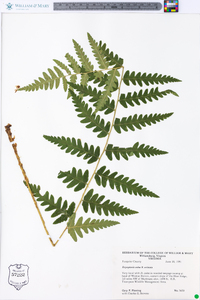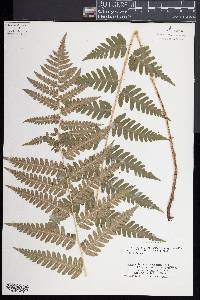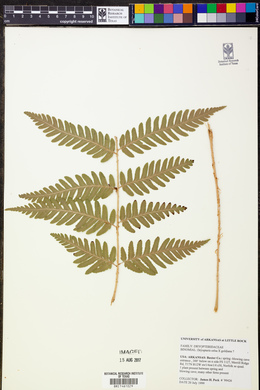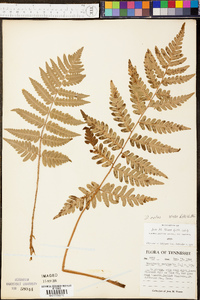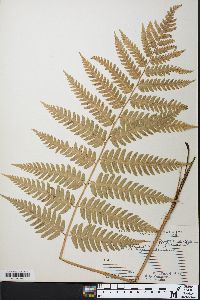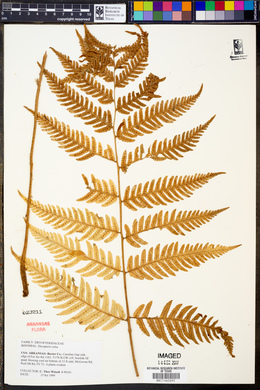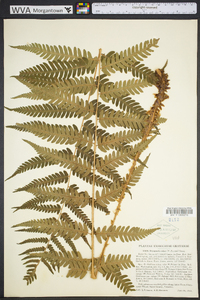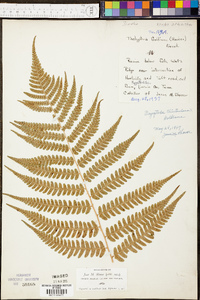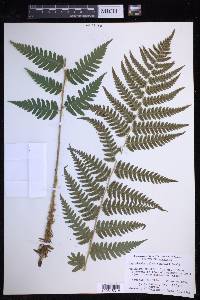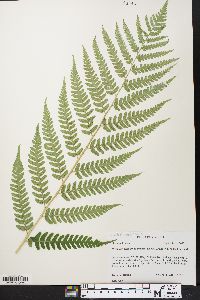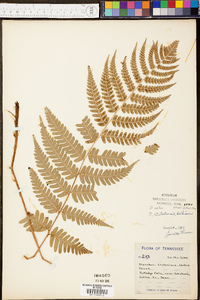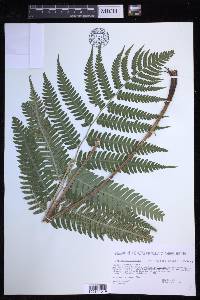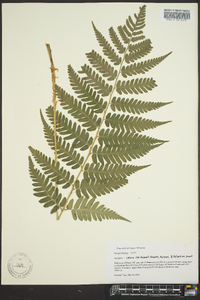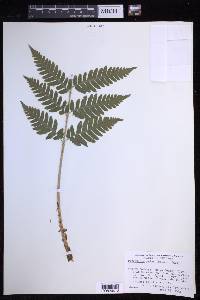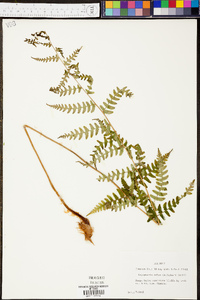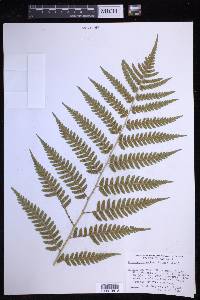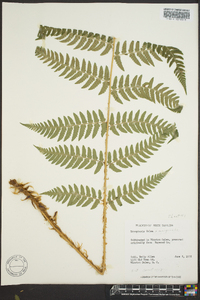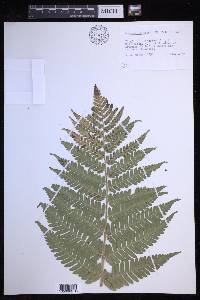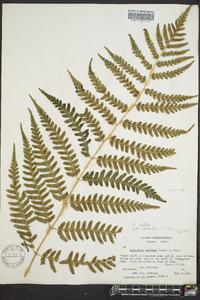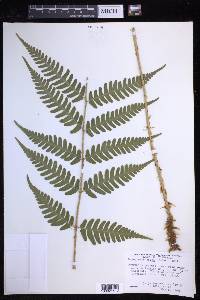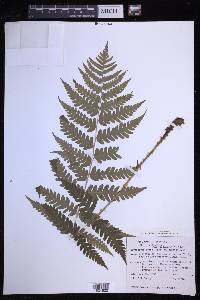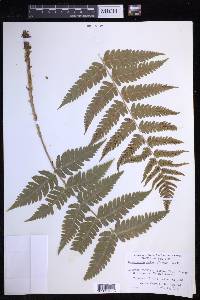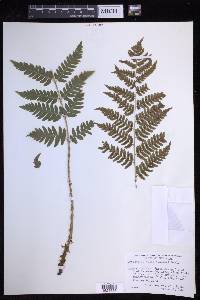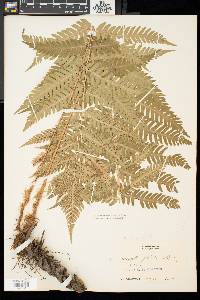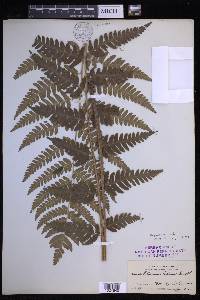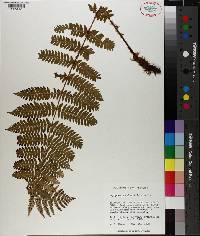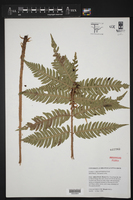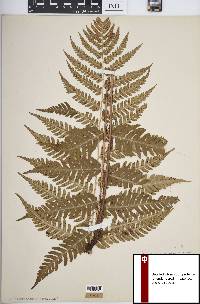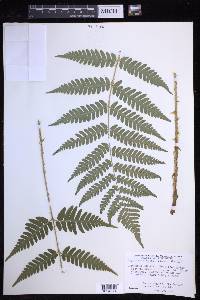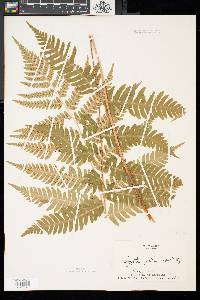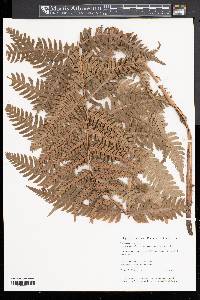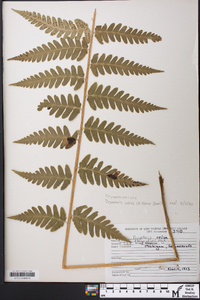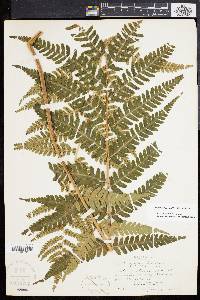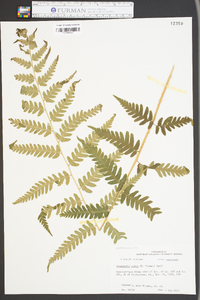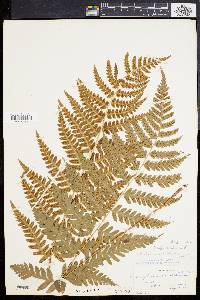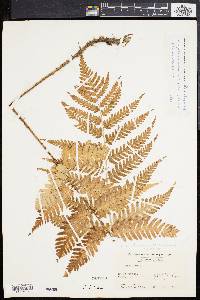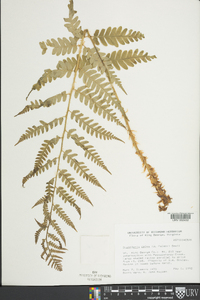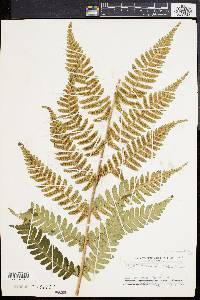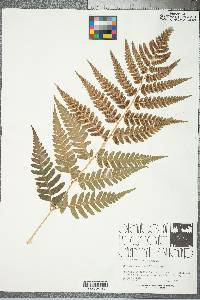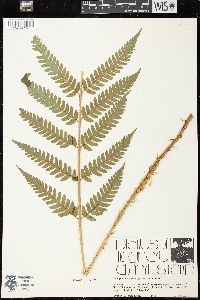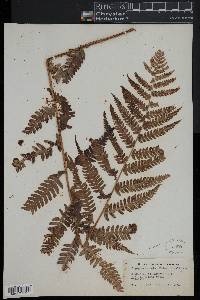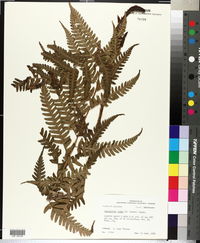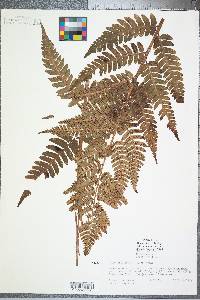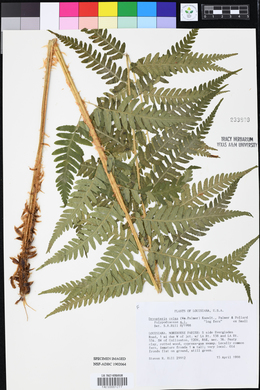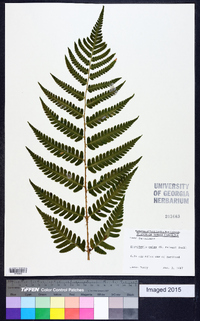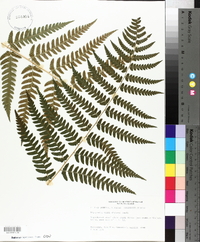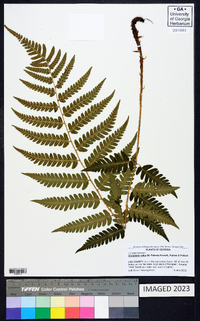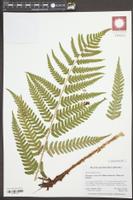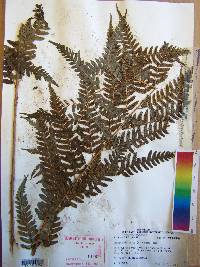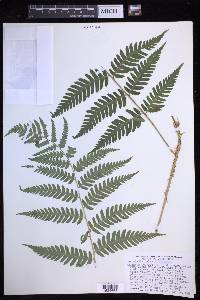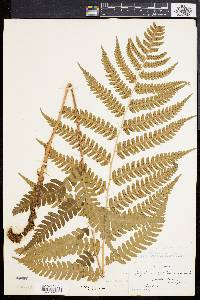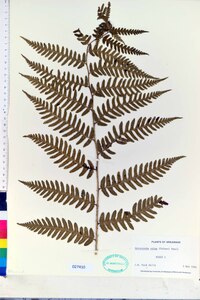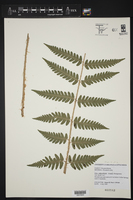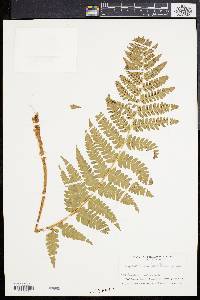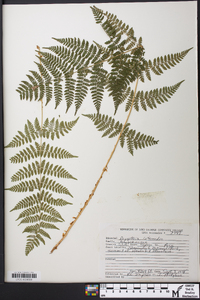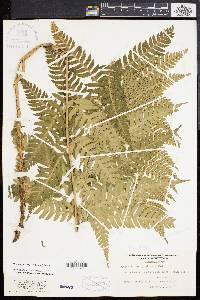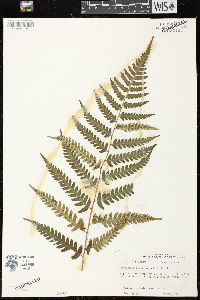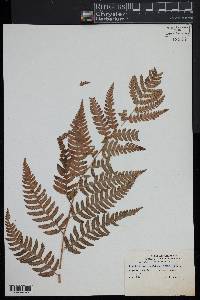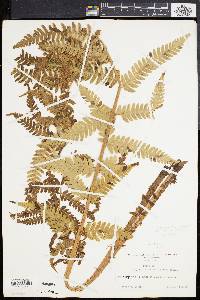
|
|
|
|
Family: Dryopteridaceae
Log Fern
[Dryopteris goldiana subsp. celsa Wm. Palmer] |
Leaves monomorphic, dying back in winter, 65--120 × 15--30 cm. Petiole 1/3 length of leaf, scaly at least at base; scales scattered, dark brown or tan with dark central stripe. Blade green, ovate-lanceolate, gradually tapering to tip, pinnate-pinnatifid, herbaceous, not glandular. Pinnae ± in plane of blade, lanceolate-ovate; basal pinnae linear-oblong, much reduced, basal pinnules longer than adjacent pinnules, basal basiscopic pinnule and basal acroscopic pinnule equal; pinnule margins crenately toothed. Sori midway between midvein and margin of segments. Indusia lacking glands. 2 n = 164. Seepage slopes, hammocks and logs in swamps, mostly on the Piedmont and Coastal Plain; 50--800 m; Ala., Ark., Del., Ga., Ill., Ky., La., Md., Mich., Mo., N.J., N.Y., N.C., Pa., S.C., Tenn., Va., W.Va. Dryopteris celsa is a fertile allotetraploid derived from hybridization between D . goldiana and D . ludoviciana . Dryopteris celsa hybridizes with six species; hybrids can usually be identified by the dark-striped scales.
Perennial fern 0.7 - 1.2 m tall Leaves: clustered, stalked, green, deciduous (dying back in winter), 35 - 85 cm long, 15 - 30 cm wide, in outline egg- to lance-shaped with gradually tapered tip, but pinnately compound. The leaves are typically hairless on the upper surface, never glandular-hairy, but the lower surface of the main "midrib" (rachis) has some small, slender, pale brown scales, and a lengthwise groove along its upper surface. Rhizome: horizontal, short-creeping, scaly. Leaf stalks: one-third length of blade (30 - 50 cm), with large, pale bordered, dark brown scales at base. Spores: 64 per sac, brownish, all of one kind, single-sectioned (monolete), oblong or kidney-shaped, and coarsely wrinkled or with folded wings. The spores give rise to the gametophyte (the sexual phase of the plant), which is small, green, heart-shaped, hairless or often with glands or hairs, and sits above the ground. Similar species: Dryopteris celsa is most similar to D. goldiana, one of its parent species, but that species differs by having leaf blades that abruptly taper to the tip, the lowest pair of divisions (pinnae) are about the same length as those just above them, and the spore clusters (sori) are more closely set to the midvein rather than between the midveins and edges of the pinnae segments. Another similar species (also a fertile hybrid of D. goldiana) is D. clintoniana, which can be distinguished by having more triangular-shaped lower pinnae that are typically under 10 cm long, and the scales at the base of the leaf stalks are tan. Also very similar is D. cristata, but it too has more triangular pinnae, tan scales, and the lowest pinnae are usually under 5 cm long. Habitat and ecology: Incredibly rare, only known from Berrien County, Michigan where it grows in acid soils in shaded swamps and in rich seepage habitats, especially on logs and hummocks. Occurence in the Chicago region: native Notes: This species originated from the hybridization of D. goldiana and D. ludoviciana. It also hybridizes with six species and those hybrids can normally be distinguished by their dark-striped scales on the leaf stalks. In the Chicago Region, a hybrid between D. celsa and D. cristata has been documented. Author: The Field Museum Rhizome horizontal, short-creeping; lvs to 12 dm, deciduous; petiole 3-5 dm, with large, ±bicolored scales (dark medially, with paler margins) and small, almost hair-like, pale brown scales; blade ovate-oblong, 3.5-6(-8.5) dm, (1.5-)2-3 dm wide, not much tapered at the base, gradually tapering to the tip, pinnate-pinnatifid with to 18 pairs of pinnae, the larger pinnae with ca 12-15 pairs of distantly serrulate, scarcely spinulose segments, the larger segments mostly 1.5-2.5 cm; a few of the basal segments of the larger pinnae contracted below; basal pinna with the first segments shorter than the adjacent ones; sori borne midway between the midvein and the margins; 2n=164, thought to be an alloploid derived from no. 5 [Dryopteris goldiana (Hook.) A. Gray ] and the more southern D. ludoviciana (Kunze) Small. On rotting logs and in humus-rich soil in moist or wet places; N.J. and se. Pa. to Va., S.C., and n. Ga., w. to s. Ill., e. Mo., and Tex.; disjunct in w. N.Y. and sw. Mich. Rare and local. Gleason, Henry A. & Cronquist, Arthur J. 1991. Manual of vascular plants of northeastern United States and adjacent Canada. lxxv + 910 pp. ©The New York Botanical Garden. All rights reserved. Used by permission. From Flora of Indiana (1940) by Charles C. Deam Indiana Coefficient of Conservatism: C = 10 Wetland Indicator Status: OBL |

